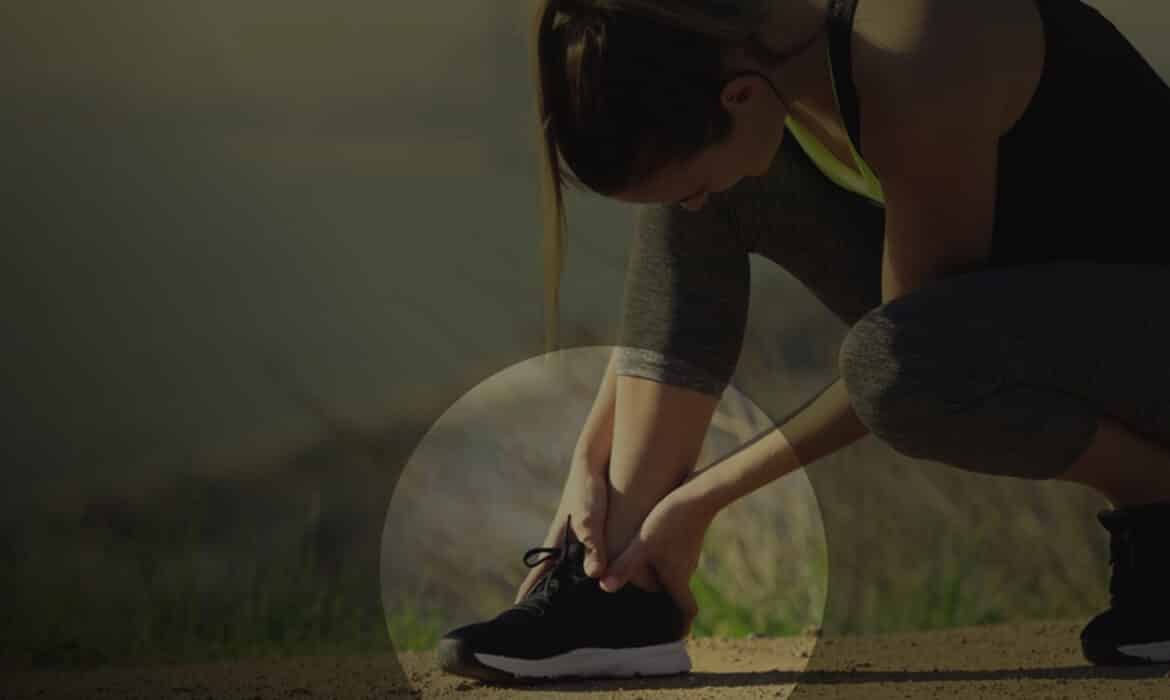Despite a tendency to put off healthcare, younger generations can benefit from addressing joint pain now
As a former high school volleyball player and competitive dancer, Evanston resident Stephanie Smith-Schellhorn has always been an active individual. Even now, the 37-year-old spends much of her time on the go, whether taking care of her teenage son, hiking with her husband, or working out at home.
So, when she started experiencing increased right knee pain in 2018, she didn’t think much of it. Despite having suffered knee injuries as an adolescent, she assumed the pain would resolve with time. After all, she was young, healthy, and energetic.

However, over the next two years, Smith-Schellhorn experienced just the opposite. The discomfort slowly exacerbated and began interfering with her day-to-day life — until one morning, after biking on her Peloton, she could barely walk without doubling over.
With each step, intense pressure and shooting pain enveloped her right leg.
“That’s when I knew something was really, really wrong,” she says.
Millennials, like Smith-Schellhorn, often put off doctor appointments for pain — either because they categorize it as a normal part of aging or assume it will get better with time.
However, the truth is that serious joint issues affect people of all ages, from infants and toddlers to the elderly — and, yes, that includes millennials. A study in the journal BMC Musculoskeletal Disorders suggests that almost a third of young adults experience knee problems. If not taken earnestly, these issues can cause severe complications down the line, including early onset arthritis and joint instability.
Paging Dr. Google
Diagnostic tests and imaging showed that Smith-Schellhorn had an injury to her cartilage — the rubber-like connective tissue that cushions the knee joint — with a worn-down area on her knee joint, says her doctor, Patrick Birmingham, MD, an orthopedic surgeon at NorthShore University HealthSystem in Evanston.
“My analogy is that it’s like having a pothole in the road. There’s an area where there’s no cushion in one spot,” Birmingham says.
Fortunately for Smith-Schellhorn, she sought evaluation just in time.
Had she decided to postpone seeking care much longer, the rest of her cartilage would likely have undergone damage as well, causing “the whole road to wear out, not just one pothole,” Birmingham says. This would put her at risk for arthritis and possibly a knee replacement in middle age.
“Delaying treatment is often the unfortunate outcome.”
For many millennials, delaying orthopedic care now can mean a missed opportunity to prevent joint replacements later. Costs can be an issue, with an Insider/Morning Consult poll showing almost half of millennials have delayed medical care because of finances.
Sebastian Ko, MD, an orthopedic surgeon at Weiss Memorial Hospital, notes an increased tendency for delayed treatment in younger generations.
“I think because of the digital age, there’s a lot of information that’s easily accessible to everybody. That misleads a lot of people in terms of trying to perform self-diagnosis and perhaps arriving at the wrong diagnosis,” he says. “Delaying treatment is often the unfortunate outcome.”
Luckily, a range of treatments can address joint pain. In young populations with joint damage, physicians first attempt to preserve the joint and avoid prosthetic replacements that start to deteriorate within 30 years.
For minor injuries, surgeons often opt for conservative treatments. The most basic of these is an injection of hyaluronic acid, a gelatinous substance that provides extra cushioning to the joint. Birmingham likens it to “adding air to a leaky tire.” This treatment lasts approximately six months, providing temporary relief to the area.
A level above hyaluronic acid are two types of biologic injections: platelet rich plasma (PRP) and bone marrow concentrate. The treatments involve injecting substances from a person’s own blood or bone marrow — including platelets, growth factors, and signaling molecules — into their knee joint to minimize inflammation and enhance healing and regeneration in the area.
Similarly, bone marrow injections are a novel treatment option that introduces stem cells to the joint space, also promoting regeneration. Recent studies have shown a 67% improvement in symptoms from these injections, the effects of which typically last a few years.
However, Smith-Schellhorn needed a slightly more involved procedure due to the magnitude of her cartilage loss. After a thorough assessment, Birmingham recommended a cartilage transplant that implants donor cartilage and bone at the site of injury “to effectively fill in the pothole,” he says.
Regaining function
Though this procedure had a long recovery, it offered Smith-Schellhorn the highest chance of regaining full function of her knee. The alternative was symptom management until an inevitable knee replacement.
“It felt like a no-brainer to me to keep up the lifestyle that I like to live and to just be comfortable and active,” Smith-Schellhorn says.

She underwent a cartilage transplant, followed by several slow months of physical therapy. She relearned how to tap her toes, took her first steps, and progressed to running and riding a bike before hitting her goal: making it through a family Disney trip without crutches or a wheelchair.
Now, nearly a year and a half after her surgery, Smith-Schellhorn says her right knee is stronger than it’s been in a long time. In fact, it’s stronger than her untreated left knee, she says.
While the transplanted cartilage is not the equivalent of a new knee, it will likely last about two decades, on average, before starting to wear out. Though Smith-Schellhorn may develop arthritis and pain down the line, this procedure buys her substantial time, hopefully eliminating the need for surgery in the future.
Smith-Schellhorn’s story is just one example of how early medical attention can prevent the loss of function and structure of the joint.
Ko recommends that people look out for warning signs that they might need joint care, including persistent or worsening pain, stiffness, and swelling, as well as difficulties with activities of daily living such as walking, changing directions, or getting out of a car.
“Those types of symptoms shouldn’t be ignored,” Ko says.
Through her experience, Smith-Schellhorn hopes to encourage others with symptoms similar to hers to seek care and get evaluated as soon as possible.
“So much of this is about making sure that you’re fit for the journey, so why not take the opportunity to resolve some of that now, so you don’t have to put yourself through it later,” Smith-Schellhorn says. “It’s not just about the here and now, but about the potential impact to my life going forward.”













